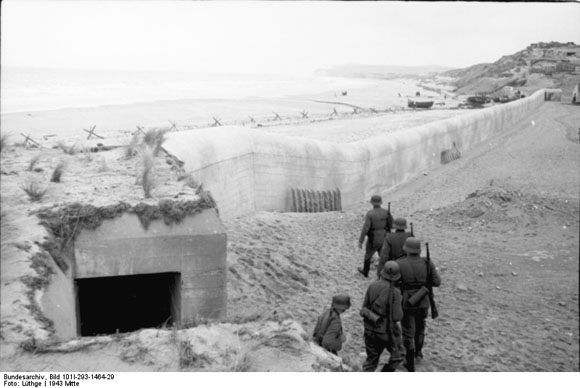Source

Source: Soldiers in front of a section of the "Atlantic Wall" in Northern France/Wissant, April/Juli 1943. Photo: Lüthge, Bild 101I-293-1464-29, Bundesarchiv.
To prevent an Allied invasion of what Hitler called “fortress Europe,” the Organization Todt (OT) began construction in the summer of 1942 on a 1,600 mile-long defensive fortification along the Atlantic coast. Upon completion, this fortification (which was referred to as the “Atlantic Wall” [Atlantikwall] in Nazi propaganda) was to stretch from the Netherlands to the Spanish border. Its completion, originally scheduled for May 1943, was delayed by shortages in building materials. By the time the Allies invaded Normandy on June 6, 1944, only a small section of it had been finished. In addition to German and French soldiers, forced laborers and POWs were also used in the wall’s construction. The Allies kept a close eye on construction, periodically disrupting it through air raids. These bombings caused heavy collateral damage, leaving towns like Lorient, St. Nazaire, and LaPallice, where German military bases had been established, completely destroyed. This image shows a bunker at a section of the “Atlantic Wall” near the French/ Belgian border.

Source: Soldiers in front of a section of the "Atlantic Wall" in Northern France/Wissant, April/Juli 1943. Photo: Lüthge, Bild 101I-293-1464-29, Bundesarchiv.